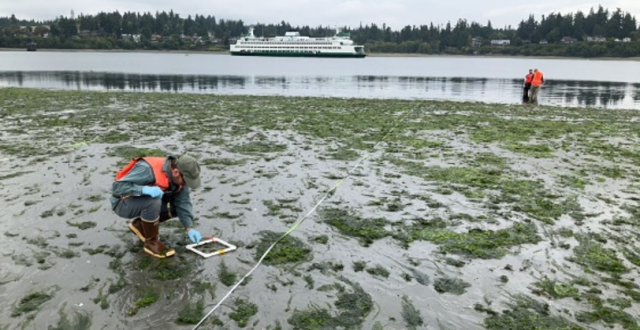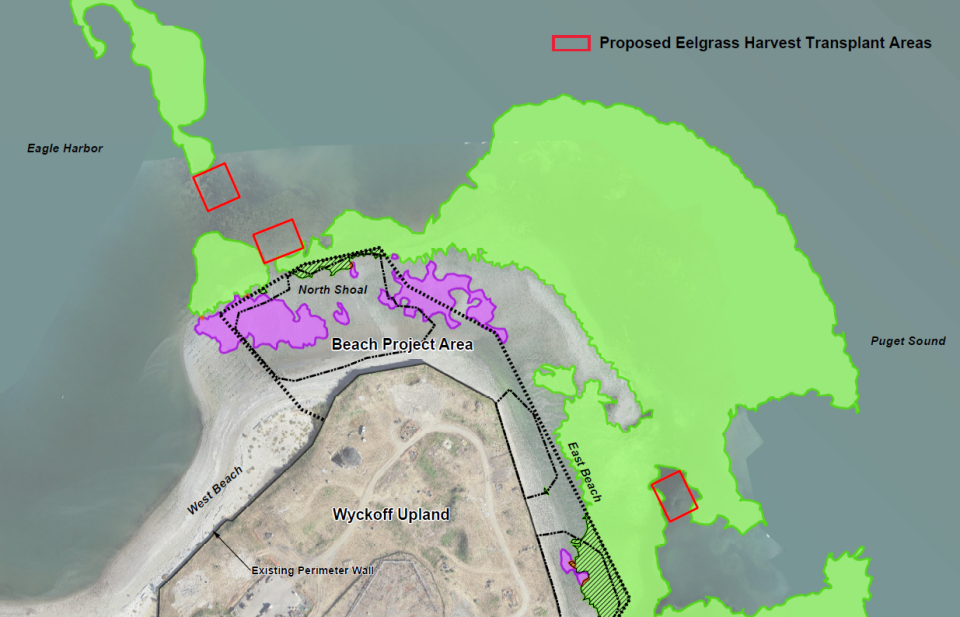Fact Sheet: EPA to Conduct Eelgrass Transplant Study
EPA will be conducting an eelgrass transplant study within and surrounding the Wyckoff Beach, harvesting eelgrass within the active remedial footprint that will be impacted by construction and transplanting to other areas on site.

Zostera marina, also known as eelgrass, is one of the more important seagrass species within nearshore areas of the ocean. Healthy eelgrass provides important ecosystem functions such as food for waterfowl and sea turtles, foraging and shelter for fish, spawning surfaces, and can improve overall water quality.
The study is being conducted to understand how eelgrass can be effectively transplanted and what environmental conditions may be ideal for transplant success.
Over 22 acres of eelgrass border the Wyckoff/Eagle Harbor site shown as green in the figure below. The purple areas are dwarf eelgrass, also known as Zostera japonica.

Conditions such as water circulation, depth, and sediment makeup (nitrate, phosphate,
organic material) will be evaluated during the placement of transplant sites to identify
conditions that could limit or enhance eelgrass transplant success.
Two different transplant methods will be used at each of the three test plot locations to compare and contrast transplant success rates using different harvest and transplant techniques.
Monitoring surveys will be conducted three months following transplantation and at one and two years later to determine how additional site data collection or transplant methodology could enhance future successful eelgrass transplantation.
A printable version of this fact sheet is also available: EPA to conduct eelgrass transplant study (pdf) - March 2024
